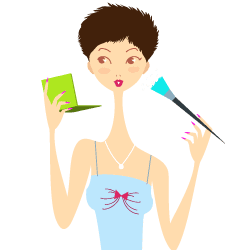
Varying Translation Requirements in the Fashion Industry
Translation Requirements in the Fashion Industry
The glamorous and lucrative world of fashion has drawn greater attention from people all over the world through the mass media. Publishing and printing houses, television and the internet have massively contributed to the stature that the industry presently holds. Back in the days, the fashion industry was a seemingly isolated trade that is majorly controlled and availed by the rich and the powerful. It was not until the Industrial Age when fashion extended to all other societal classes when clothes and fashion ornaments were mass produced. Eventually, the commerce of clothing, and the fashion trade in general, increased radically and tremendously.
Fashion is an industry that goes beyond the limits of physical distance and location, language, or even the differing and sometimes conflicting preference for style, design and form. How fashion indeed sets the world in a common understanding that goes beyond linguistic endeavors.
Fashion, they say, does not need a language; it is in itself a language that facilitates people to understand each other regardless of the varying lingo they speak. In order to cater the world’s changeable preference for fashion trends and styles, however, the people behind it employs the aid of language experts to market and package clothes, accessories and other fashion items. As with any other business, fashion has certain translation requirements that linguists need to know about.

Designers and stylists from Italy, for instance, conversely transmit designs, trending styles and clothing line terms with counterparts in the US or in Japan. Translation services make these exchanges smoother, meaningful and easier. Because language differences are a major hindrance in communication, language providers are always helpful. Enabling manufacturers and ateliers to establish common ties regarding clothing specifications is a major contribution of translation, and that it back up businesses in hitting sales goals.
To be more specific on these benefits, there are translation requirements in the fashion industry when is needed to transmit documents from a designer to a fabric supplier, both speaking different languages. Correspondence between models or stylists, and fashion editors and designers become a considerable exchange of inputs and ideas when translations are used.
Product information, additionally, takes important cue from translation services. When fashion capitalists desire higher leverage in a globalized economy, they majorly consider and depend on translation companies to transmit multilingual information. Fashion rise above location or language, but it needs a localization appeal to earn a key spot in this era of globalization. It is in this industry where trends and styles change significantly, often at such short periods of time. If there is no translation to expand the market, perhaps fashion houses and institution may have a hard time establishing such trends—trends that are mostly dictated by capitals like New York, Milan and Paris. Without language translation, it would be unfamiliar to spot styles that conform to a current trend.
Likewise, besides compliance with a country’s legal requirements for trade and commerce, product information that are translated to a target market’s native tongue emphasizes focus on localization that helps in improving sales lead and marketing promotion. Catalogues, television commercials and manufacturer or product information rely on language translation that facilitates exposure and publicity in foreign markets. To expand market visibility, fashion institutions and key players employ the assistance of language services to provide their brands with the right amount of localization. Concerns such as sizes, clothing tags and washing instructions vary per country need to be properly translated. Such diverse translation requirements for multiple markets in different countries may bring quite a few benefits for the fashion industry.
Translation Requirements
Fashion is a multimillion-dollar business. It includes a wide range of different businesses, different types of translation and translation requirement. The fashion industry is a complicated field with a variety of audiences, from customers to associates to the press. As a translator working with the fashion business, you might translate:
• product specifications for clothes and accessories
• press releases
• presentations and speeches
• articles about famous or up-and-coming designers
The fashion translation requirement varies from repetitive product information to effective marketing copy. And the experiences you need for those different styles differ too. You can be asked to produce captivating advertisement copy one minute and to research the difference between some dresses. Sometimes you’ll need to connect that technical product information with your enticing advertisement copy in the same translation.
When growing internationally, it’s essential to carry your brand’s voice in a way that resonates with each kind of audience in their language


